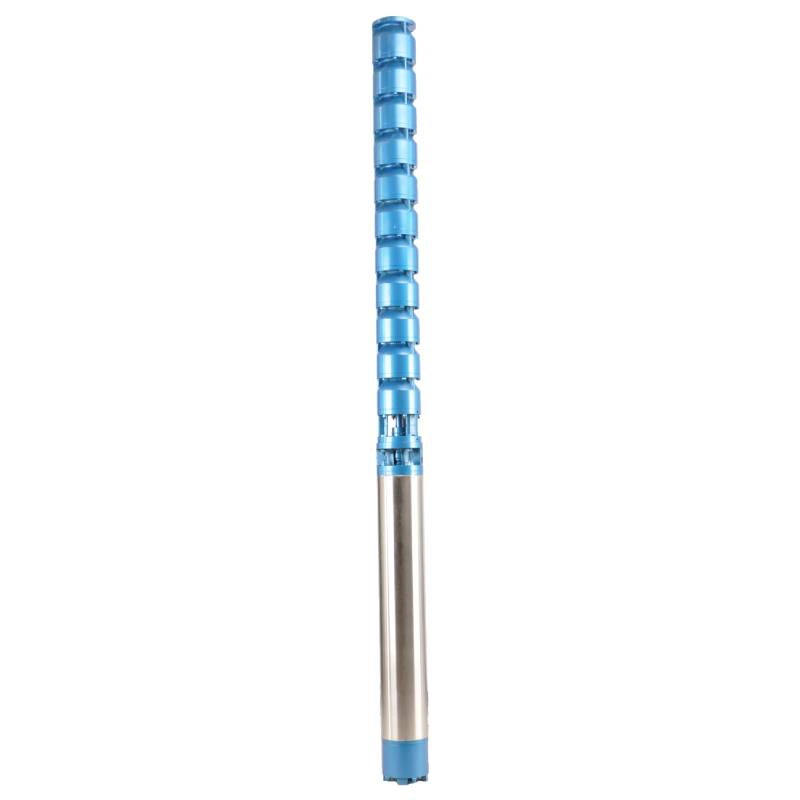oct. . 13, 2024 14:35 Back to list
Compact Submersible Sump Pump for Efficient Water Management and Drainage Solutions
Understanding Small Submersible Sump Pumps
When it comes to managing water in basements, crawl spaces, and other areas prone to flooding, a small submersible sump pump can be an invaluable tool. These compact yet efficient devices are designed to remove accumulated water, preventing damage to your property and ensuring a dry environment. In this article, we will explore the functionality, advantages, and considerations associated with small submersible sump pumps.
How Do Small Submersible Sump Pumps Work?
A submersible sump pump is designed to operate while submerged in water. It typically consists of a motor and a pump housed within a hermetically sealed shell, which protects its internal components when submerged. The operation begins when the water level in a sump pit rises, activating a float switch. Once the switch is triggered, the motor starts, powering the pump to draw out water and discharge it through a pipe leading to an appropriate drainage area.
These pumps are particularly effective for situations where water accumulates quickly, making them ideal for areas prone to heavy rainfall or melting snow. Unlike pedestal pumps, which sit above the water level and require more space, submersible models can be installed directly in the sump pit, allowing for a more streamlined setup.
Advantages of Small Submersible Sump Pumps
1. Compact Size One of the most notable benefits of small submersible sump pumps is their size. They can fit into small sump pits, making them perfect for residential use where space is limited.
2. Efficiency These pumps are generally more efficient than their pedestal counterparts. Because they are submerged, they can handle larger volumes of water in a shorter period, making them ideal during heavy rains or sudden floods.
3. Quieter Operation Submersible pumps typically operate more quietly than other types, as the water muffles the noise. This is particularly important in residential settings where noise can be a concern.
4. Durability Many small submersible sump pumps are constructed from robust materials, making them resistant to rust and corrosion. This durability ensures longevity, reducing the need for frequent replacements.
small submersible sump pump

5. Reduced Maintenance With fewer moving parts exposed to the elements, submersible pumps generally require less maintenance compared to other pump types. Regular checks and cleaning of the inlet screen typically suffice to keep them in good working condition.
Considerations When Choosing a Small Submersible Sump Pump
While small submersible sump pumps offer many advantages, there are several factors to consider before making a purchase
1. Horsepower and Capacity When selecting a pump, it’s important to consider the horsepower and capacity that match your water removal needs. Calculate the volume of water and the height it needs to be pumped to ensure you choose the right size.
2. Switch Type Look for pumps with reliable float switch systems. There are different types of switches, including vertical, tethered, and electronic. Each has its advantages, so it's important to choose one that fits your setup and preferences.
3. Power Source Most sump pumps run on electricity, but in areas prone to power outages, consider a pump with a battery backup system. This ensures that your sump pump will continue to operate even when the electricity goes out.
4. Installation and Maintenance Evaluate whether you will install the pump yourself or hire a professional. Understanding the installation process and any ongoing maintenance needs can help you make an informed decision.
Conclusion
Small submersible sump pumps play a critical role in protecting homes from water damage due to flooding. Their efficiency, durability, and compact size make them an ideal choice for homeowners looking to manage water accumulation effectively. By understanding the features and considerations associated with these pumps, you can make a well-informed decision that safeguards your property against water damage.
-
Submersible Water Pump: The Efficient 'Power Pioneer' of the Underwater World
NewsJul.01,2025
-
Submersible Pond Pump: The Hidden Guardian of Water Landscape Ecology
NewsJul.01,2025
-
Stainless Well Pump: A Reliable and Durable Pumping Main Force
NewsJul.01,2025
-
Stainless Steel Submersible Pump: An Efficient and Versatile Tool for Underwater Operations
NewsJul.01,2025
-
Deep Well Submersible Pump: An Efficient 'Sucker' of Groundwater Sources
NewsJul.01,2025
-
Deep Water Well Pump: An Efficient 'Sucker' of Groundwater Sources
NewsJul.01,2025
-
 Submersible Water Pump: The Efficient 'Power Pioneer' of the Underwater WorldIn the field of hydraulic equipment, the Submersible Water Pump has become the core equipment for underwater operations and water resource transportation due to its unique design and excellent performance.Detail
Submersible Water Pump: The Efficient 'Power Pioneer' of the Underwater WorldIn the field of hydraulic equipment, the Submersible Water Pump has become the core equipment for underwater operations and water resource transportation due to its unique design and excellent performance.Detail -
 Submersible Pond Pump: The Hidden Guardian of Water Landscape EcologyIn courtyard landscapes, ecological ponds, and even small-scale water conservancy projects, there is a silent yet indispensable equipment - the Submersible Pond Pump.Detail
Submersible Pond Pump: The Hidden Guardian of Water Landscape EcologyIn courtyard landscapes, ecological ponds, and even small-scale water conservancy projects, there is a silent yet indispensable equipment - the Submersible Pond Pump.Detail -
 Stainless Well Pump: A Reliable and Durable Pumping Main ForceIn the field of water resource transportation, Stainless Well Pump has become the core equipment for various pumping scenarios with its excellent performance and reliable quality.Detail
Stainless Well Pump: A Reliable and Durable Pumping Main ForceIn the field of water resource transportation, Stainless Well Pump has become the core equipment for various pumping scenarios with its excellent performance and reliable quality.Detail
